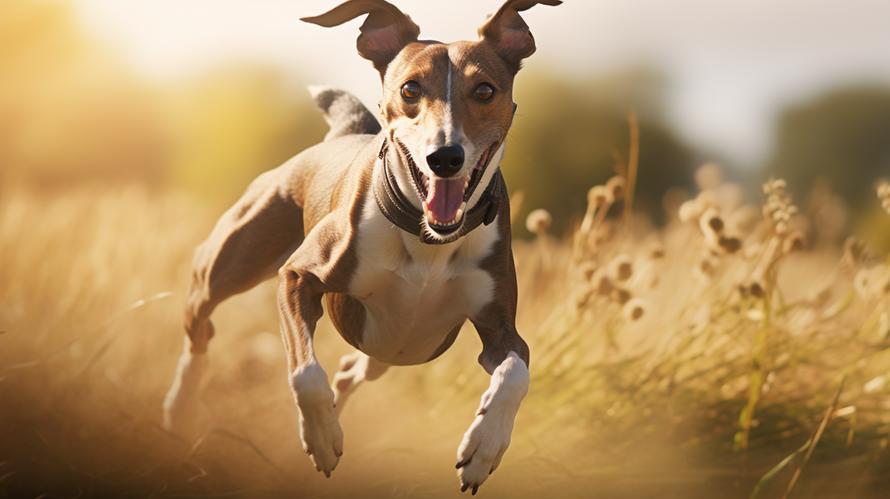Imagine a dog that can outpace Usain Bolt in a sprint, then just moments later, curl up on the couch for a lazy afternoon nap as if it’s been lounging all day. That’s the Greyhound for you; an enigma wrapped in a sleek, muscular frame, boasting both the title of a speed champion and a couch potato. What an unusual combination! This fascinating paradox is exactly what makes the Greyhound a topic worth diving into.
So, let’s unravel the personality of the Greyhound and discover whether it is indeed the calm canine companion many seek. With their long, aerodynamic limbs and hearty chests, Greyhounds have been bred for centuries to be top-notch hunters, capable of chasing down game with the grace of a gazelle. Despite this athletic prowess, they’re often touted as surprisingly tranquil pets. But why?
The answer lies in their very nature; these dogs are sprinters, not marathon runners. After a burst of energy, they need plenty of downtime to recharge their batteries. This is actually a trait that has endeared them to humans across generations. People who have opened their homes to these lanky hounds find themselves living with a pet who, despite having the power to zoom, often prefers to laze about. In fact, Greyhounds have earned the moniker “45-mph couch potatoes,” a nickname that perfectly captures their dual lifestyle.
But let’s not oversimplify their character into a single trait. Greyhounds are as complex as they are fast. In the home, they can indeed be the epitome of serenity, exuding an almost zen-like presence. Their calm is not just casual; it’s colossal, as if they’re expressions of living, breathing meditation. They often move through the house with a gentle grace, stepping lightly, and settling in quiet corners for long naps.
Part of their peacefulness comes from the breed’s sociable but laid-back demeanor. They aren’t known to be aggressive or overly territorial, which makes them an excellent choice for families and individuals living in varied types of environments, be it spacious houses or more compact condo living. The breed’s requirement for mental and physical relaxation aligns well with a low-key lifestyle and those who prefer a quieter household.
Another factor contributing to their calmness is their natural sensitivity. Greyhounds are incredibly attuned to their surroundings and the emotions of their owners. This sensitivity means they’re likely to retreat from chaos rather than contribute to it. Therefore, a household that can provide a stable, gentle environment will have a content Greyhound who is at ease.
While Greyhounds adore their chill time, it’s important for potential owners to know that these dogs need their fair share of exercise too. A couple of short walks each day, paired with a chance to run in a safely enclosed space several times a week, allows them to maintain their health and satisfy their need for speed. It’s during these sprint sessions that one can truly admire the elegance and power of a Greyhound in full motion.
This brings us to a crucial piece of advice for Greyhound owners concerning their need for physical activity: a securely fenced area is non-negotiable. Given their instinctual drive to chase, Greyhounds can suddenly bolt after small animals or moving objects. Their lightning speed combined with a strong prey drive can lead to dangerous situations if they’re not in a secure area.
Training and socialization are also key components in nurturing the composure of a Greyhound. They respond well to positive reinforcement and gentle guidance. Because of their sensitive nature, harsh training methods will likely backfire, leading to a nervous and unhappy dog. Instead, employing patience and consistency will help you to harness their natural obedience.
Many people are surprised to learn that Greyhounds are actually quite suited for apartment living. They don’t need a lot of space to roam, as long as they get their regular exercise. Their quiet nature and minimal barking make them considerate neighbors who are unlikely to cause a ruckus.
One tip for keeping your Greyhound serene is to help them feel secure. Owing to their thin skin and lack of body fat, they can be quite sensitive to the cold. A cozy blanket, a soft bed, and a warm sweater can provide them with the comfort they need to relax fully.
It’s also worth mentioning that Greyhounds are generally healthy dogs, thanks to their athletic lineage. Yet, they do have some breed-specific health concerns, like sensitivity to certain medications and a risk for bloat. Therefore, it’s vital to have a vet who understands the unique needs of a Greyhound.
Lastly, let’s not overlook the beauty of adopting a retired racing Greyhound. These former athletes, after their racing days are over, are often looking for a forever home. They transition remarkably well from the track to the living room, eager to embrace a slower pace of life surrounded by loving companions.
In conclusion, the Greyhound, with its splendid mix of noble grace and gentle repose, is indeed a calm canine, albeit one with an athletic edge. From the track to the comfort of the family den, they exude a quiet confidence and a placid charm that can bring tranquility to a bustling home. For those looking for an affectionate pet who embodies the very spirit of peace and relaxation, with the added thrill of watching a world-class athlete in action during playtime, the Greyhound might just be the perfect addition to your family.



